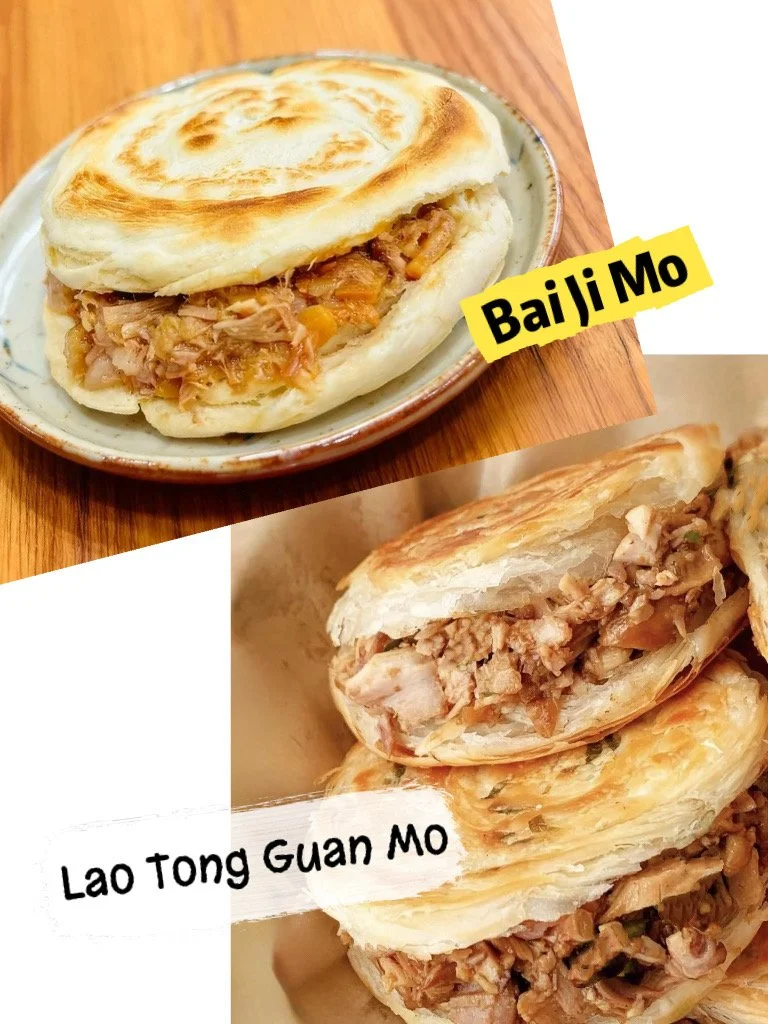Taste the Authentic Chinese Street Foods
Cold Skin Noodle
Liang Pi (凉皮)
Region of Origin: Shaanxi Province, Northwest China
The Story Behind It:
With a heritage spanning over two thousand years, Liang Pi is one of China's most ancient and beloved street foods, rumored to have been enjoyed since the Qin Dynasty. Its name literally means "cold skin," a perfect descriptor for its silky, cool texture. Originally a peasant dish, Liang Pi evolved into a staple across Shaanxi, celebrated for its ability to refresh and invigorate, especially during warm weather. It's a testament to the region's resourceful cooking, turning simple ingredients into a complex flavor experience.
How We Craft It:
Our Cold Skin Noodle begins with a meticulous process of washing dough to separate the starch from the gluten. The pure starch slurry is then steamed into thin, translucent sheets, which are then skillfully sliced into wide, ribbon-like noodles. These freshly made noodles are then hand-tossed with crisp shredded cucumber, bean sprouts, and drenched in our secret blend of fragrant chili oil (w/ 10+ spices), aromatic garlic water, and tangy black vinegar. This combination ensures a bold, authentic Shaanxi profile — bright, tangy, and spicy with a delightful chewiness that's truly unique.
Chinese Meat Sandwich
Rou Jia Mo (肉夹馍)
Region of Origin: Xi'an, Shaanxi Province, Northwest China
The Story Behind It:
Hailed by many as the "world's oldest sandwich," the Roy Jia Mo boasts a storied past tracing back over a thousand years to the Tang Dynasty. Its name, "meat sandwiched in a bun," perfectly encapsulates its simple yet profound concept. This iconic street food from Xi'an, the ancient capital and starting point of the Silk Road, was originally a hearty, portable meal for travelers and laborers. It’s a testament to slow-cooking traditions, where time and patience transform humble ingredients into something extraordinary.
How We Craft It:
The heart of our Rou Jia Mo is the succulent, slow-braised meat. We achieve the perfect balance of richness and texture by using a traditional blend of lean pork shoulder and tender pork belly. This meat is simmered for hours in a rich, complex broth infused with over 20 aromatic spices, resulting in an unbelievably tender and flavorful filling. Once finished, the meat is finely chopped, mixed with its savory broth, and generously stuffed into your choice of bun. You can choose the Bai Ji Mo (Classic Xi'an style) — a thick, unleavened bun that's soft and chewy inside, perfect for soaking up the juices. Or, try the Lao Tong Guan Mo (Extra-Crispy style), which is made using a unique lamination process and baked to a shatteringly crisp, flaky, and buttery-rich texture for those who crave maximum crunch.
Chinese Crêpe
Jian Bing Guo Zi (煎饼馃子)
Region of Origin: Tianjin, Northern China
The Story Behind It:
In Tianjin, this is the breakfast you grab on the way to school, work, or life. The name “Jian Bing” refers to the thin savory crêpe. The key is the Guo Zi (馃子), which is the local word for youtiao (fried dough).
Tianjin’s Jian Bing is defined by the soft crêpe + warm, chewy dough stick pairing. It’s comforting and satisfying in a way that hits memory-level.
How We Craft It:
Our Jianbing Guozhi starts with a traditional, savory batter made primarily from mung bean flour, which gives the crêpe its signature tender texture and slightly nutty flavor. The batter is skillfully spread thin on a hot, circular griddle, and a fresh egg is cracked directly on top and spread evenly. As it cooks, it's sprinkled with chopped scallions and cilantro, then brushed with our secret blend of sweet bean paste sauce. Finally, a whole freshly fried dough stick (guo zi) is placed in the center, and the crêpe is expertly folded around it. The result is a perfect harmony of soft, savory, and satisfyingly chewy-crisp textures in every bite.






